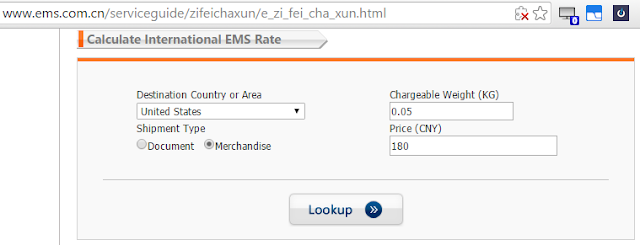If you've browsed eBay within the past few years, you've undoubtedly seen a listing like this:
There are thousands and thousands of listings on eBay for goods that you can get from China for unimaginably low prices. How is it possible? It isn't because of slave labor.*
A lot of American eBay businesses put the blame on eBay and they are partially right. Here are three ways American sellers are at a disadvantage versus Chinese sellers
- ePacket. ePacket was setup by eBay to give free tracking and delivery confirmation to packages coming from China. The US Postal Service usually charges a couple bucks for this. For a place like eBay whose bread and butter is cheap trinkets, this is pretty big.
- eBay charges no Final Value Fees for most Asian countries, whereas it's a whopping 10% in the US.
- Universal Postal Union regulations. They state that international mail, once at the country of destination, must be delivered domestically for free. So once a product from China (or anywhere) arrives at a US port, the USPS will deliver it for no charge. It works both ways, so if you mail something to someone in China, you pay USPS to deliver it to a Chinese port, and China Post will deliver it anywhere in China for free.
Although the Chinese middle class is now larger than the American middle class, and although consumption in China has risen dramatically, trade still largely flows from China to the US. Hence the chorus of complaints from American sellers and the bewilderment of American buyers at such low prices.
But those three reasons still don't explain how someone can ship a package from Hong Kong thousands of miles to the United States for less than a dollar. Near zero shipping costs for sea freight is believable but that takes 17-20 days. Those Chinese eBay sellers are shipping via air mail which is the most expensive transport mode.
How expensive? The EMS (a subsidiary of the state-run China Post) cost to ship a 50 gram package is 180 Yuan- as of writing $28.31.
By comparison it's around $26.50 based on a flat rate envelope to ship air-mail from the US to China via our own state-run USPS.
These air mail prices are in line with what you'd expect.
However, when you look at buying a tripod direct from the factory in China, we see this shipping table. This is from AliExpress, which is sort of like China's eBay.
Again, state-run EMS is cheaper than the private carriers but look at China Post Air Mail and ePacket. Both are air mail services that cost under $2.00 to ship. The private carriers are well over 2,000% higher! A dummy might conclude that they are all collaborating to price themselves out of one of the largest and fastest growing air freight markets on the planet and can't compete with the lean, efficient Chinese government. Or, maybe, just maybe, the government shipping options are being subsidized.
Why? I believe it is to drive export growth. Exports were an important factor in the rise of Japan and South Korea so the Chinese Communist Party probably thinks export subsidies can juice growth. Indeed, if you use EMS's "International E-commerce Express" (emphasis mine) service which currently only covers shipments to the United States, the cost is 6 Yuan or only $0.94 compared to nearly $30 if you use the regular EMS service. That's right, if you are in China selling stuff online to people in the United States, you get a 97% off shipping.
The cost, in the sense of the expense portion of gross profit, is probably a bit over $4 based on the fact that Amazon, which has optimized shipping charges like no other entity on this planet and still operates its shipping at a large loss, charges a $4 minimum to air mail Hong Kong.**
Who is picking up the difference? As with all subsidies, it's the taxpayer. In this case, the Chinese taxpayer chips in at least $3, likely quite a bit more, every time an American buys a small trinket off a Chinese eBay seller/AliExpress/DealExtreme (and increasingly Amazon).
But wait, a $0.99 tripod after $0.94 in shipping, that's 5 cents. These tripods are around $0.33 in bulk so that is a $0.28 loss. What I think some of these sellers are doing is taking a small loss in order to build their feedback ratings. But they probably need it considering the negative feedback they get when customers' only option is to keep a bad item or fork over $25 to return.
* Though if you consider taxation to be a kind of slavery, then yes. It's slave labor.
** Not including the Kindle which is a loss leader.





No comments:
Post a Comment
Note: Only a member of this blog may post a comment.